
19 December 2023
"The building blocks for future fitness and soundness are established during the first two years of a horse’s life."
The musculoskeletal system is comprised of four tissues: bone, muscle, articular cartilage and tendons (including ligaments), each of which responds best to a specific type of conditioning stimulus applied at a specific age. Bones and muscles can be strengthened by exercise throughout the horse’s life-time but cartilage and elastic tendons adapt only during the first two years of life. After that, they are susceptible to damage during exercise. Therefore, the amount and type of exercise undertaken by foals and yearlings has a huge influence on soundness during their athletic career (Weeren et al., 2010).
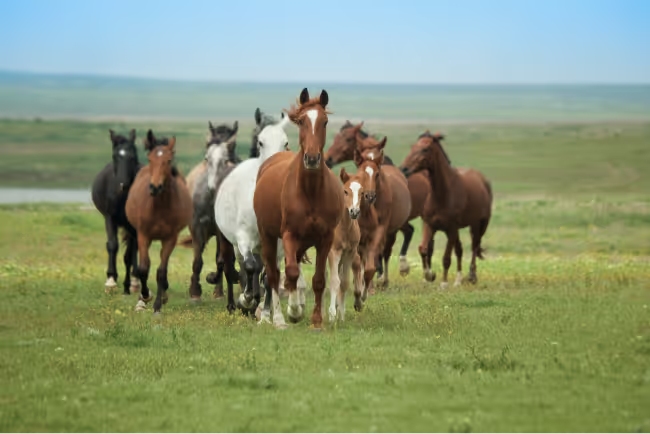
Articular cartilage covers the ends of the bones within the joints, providing a smooth resilient surface for joint movement and acting as a cushioning layer to dampen loading during exercise. To develop strong, functional cartilage, foals must exercise strenuously to generate high loading rates and diverse loading patterns on their limbs. This is best achieved when foals are turned out with other foals. Play behavior fulfills the conditions needed to stimulate the development of strong, functional cartilage for the lifetime of the horse (Rogers et al., 2019). The window for development of articular cartilage closes early in life, around one year of age.
The suspensory ligament (SL) and the superficial digital flexor tendon (SDFT) are both classified as elastic tendons. They are stretched as the limb is loaded early in the stance phase, and then they recoil as the limb is unloaded later in the stance, releasing stored elastic energy that is used to move the limbs. Foals need free pasture exercise to develop.
In order to develop strong, functional elastic tendons, foals need to exercise freely and lack of turnout early in life results in biomechanically inferior tendons. For example, the cross-sectional area of the SDFT is 50% larger in foals on turnout compared with stabled foals. Tendon strength is maximal by 12-18 months of age in the SDFT and SL.
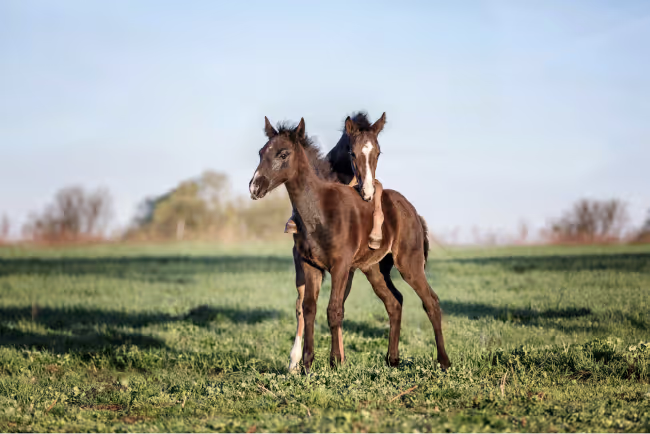
"Turnout with other foals and yearlings offers the best conditions to develop strong, functional articular cartilage and tendons. When buying a horse as a potential athlete, knowing how it was raised early in life is valuable."
Foundational training includes getting a young horse accustomed to wearing various types of tack and equipment, teaches the basic commands and aids used from the ground and from the saddle, and builds a baseline level of fitness. The fitness goal for the foundational training phase is for the horse to be able to work under saddle for 45 minutes, including 2-minute periods of cantering, on 5-6 days per week. It should take 6-12 months to accomplish these goals.
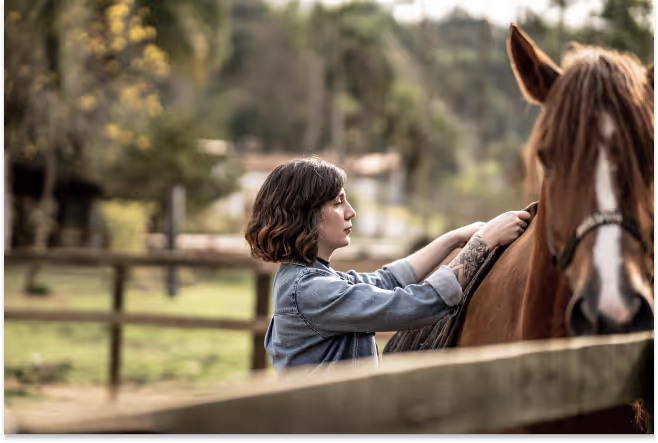
There is discussion about the appropriate age to start training. The argument for waiting until the horse is four years old is that the musculoskeletal tissues are mature and less susceptible to injury. The counter-argument is that starting horses at 2-3 years of age takes advantage of the fact that immature tissues may be more receptive to adaptation. As a rule, the earlier a horse is started, the slower the progress should be in order to allow adaptation without injury.
Foundational training is generic rather than sport-specific and is similar regardless of the long-term athletic goals for the horse. The conditioning goals are to strengthen the horse’s core so that it can carry the weight of a rider and to develop a baseline level of cardiovascular fitness from which to proceed with sport-specific training.
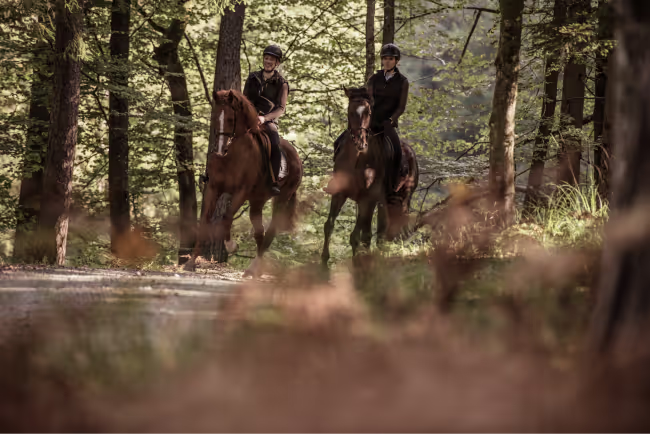
Core training is accomplished using baited (carrot) stretches and stimulated movements, such as lifting the withers and tucking the pelvis (Stubbs and Clayton, 2008). These exercises should ideally be started prior to other types of training so that when a rider mounts the horse, the core muscles are already strong enough to maintain good posture and protect the horse’s back during ridden exercise.
With regard to cardiovascular conditioning, this is stimulated by an increase in heart rate during exercise. The training programme starts with a short period of exercise that is repeated on 3-4 non-consecutive days per week. The stimulus to improve fitness is provided by an incremental increase in the amount of exercise each week. Over the course of several months, this is achieved first by lengthening the distance covered during the workouts, then by gradually increasing the intensity of exercise by working at a faster speed, introducing gradients, ground poles and grid work, or working with more impulsion.
It's good to introduce the horse to different types of exercise, remembering to introduce each new type of exercise slowly and then build up gradually over several weeks. Ideally, the conditioning exercises are integrated with the horse’s technical training to improve the skill level and fitness together.
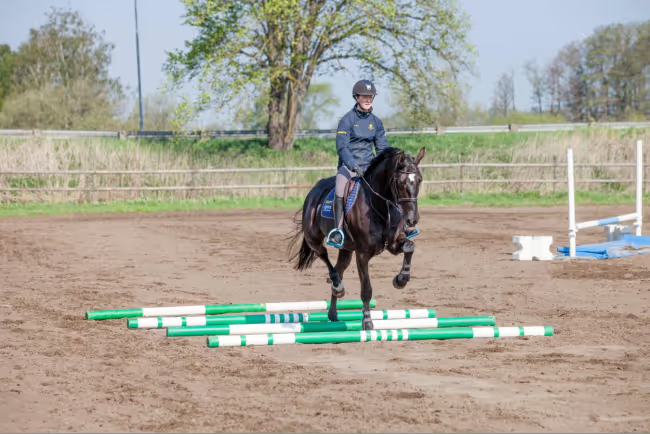
"Horses that will be used for companionship, trail riding, and lower-level competitions only need to develop and maintain sufficient fitness to perform their intended use easily."
In this phase, training is directed towards developing appropriate cardiovascular fitness and muscular strength for the specific sport(s) the horse will compete in. Horses respond well to interval training in which higher-intensity exercise that stimulates tissue adaptation alternates with less intense exercise that allows partial recovery before repeating the higher-intensity work.
Eventers focus on cardiovascular conditioning by doing trot sets and gallop sets. Hills are a great way to increase cardiovascular fitness without increasing stress on the limbs. Strength training can be incorporated into technical training, for example, by doing repetitions of grid work.
Show jumpers need to develop explosive power highly specific to the gluteal and hamstring muscles that provide power at take-off, together with strengthening muscles of the thoracic sling and forelimbs that absorb and dissipate forces when the horse lands from a jump. Hill work and jumping grids are good exercises to do this. Plyometrics is a strength training technique used by human athletes that targets the development of explosive power. Jumping grids set at bounce distances are a form of plyometrics for horses.
Dressage horses need a different type of strength than jumpers. Rather than explosive power, they need muscular strength and endurance in a specific set of muscles used in high-level collection. They benefit from walking and cantering uphill and walking downhill with slow, controlled steps in good self-carriage. Highly collected exercises can be performed using an interval training format. For example, perform collected canter on a 20 m circle and include a full pirouette at the same place on each circle for 3 repetitions. Walk for 30 seconds, then repeat on the other rein. This type of interval training should only be used in horses that can perform the movements with the correct technique, so it is usually reserved for upper-level horses.
Regardless of the sport, it is not reasonable to keep a horse at peak fitness for a long period of time; it is better to allow fitness to decline somewhat between major competitions and then increase the workload so the horse reaches a fitness peak for the next big competition.
In mature horses competing at advanced levels of competition, a major concern is preserving soundness because damage due to wear and tear has accumulated throughout the horse’s athletic career. Repetitive use injuries are particularly likely to affect the elastic tendons (SDFT and SL) or the articular cartilage (osteoarthritis). One of the trainer’s tasks is to preserve the horse’s soundness by controlling the amount of exercise.
A mature equine athlete has already learned good technique, so it needs only to maintain its technical skills and fitness level. The competitions serve as fitness workouts that help to maintain fitness and reduce the need for strenuous fitness workouts. In order to preserve soundness, riders should be careful about the type of footing on which they train and compete, avoiding hard surfaces that worsen arthritis and deep surfaces that predispose to early fatigue and soft tissue damage. At this stage of the horse’s career, the focus shifts from improving fitness to preserving the horse’s health and soundness.
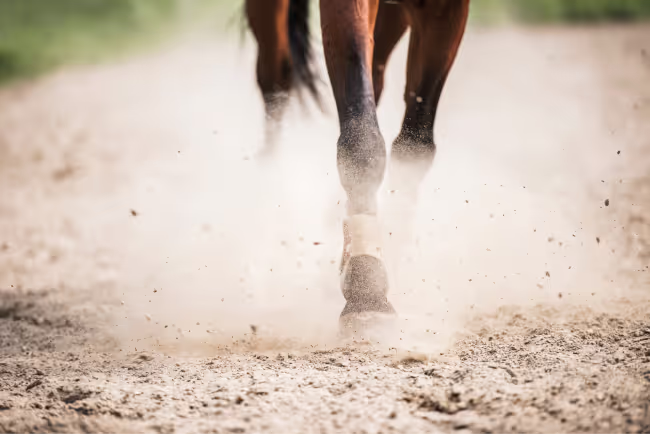
Cross-training is any sort of activity that is different from the horse’s sport-specific training. Examples include hacking, water treadmill, swimming, gymnastic jumping, etc. Ideally, horses should do cross-training at least 2 days per week, particularly on days following a strenuous workout. Cross-training has physical benefits in that it works the body differently than training for the sport, it provides mental relaxation, and it helps prevent boredom. The key is to find alternative types of exercise that both horse and rider enjoy.
Sport-specific training is necessary to produce a top performer. Cross-training preserves musculoskeletal soundness.
"This blog has outlined the process of conditioning horses for different types of competition. One thing that all sports have in common is the necessity to monitor the horse’s soundness and intervene early if a problem arises. Ask your veterinarian if using the Sleip app would be appropriate for monitoring your horse’s progress."
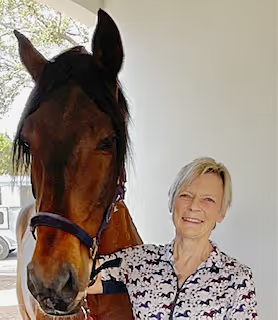
Veterinarian, researcher, and expert in the field of equine biomechanics and sports medicine.
-------------------------------------------------------------------------------------------------------------------
Rogers, C.W. and Dittmer K.E. 2019. Does Juvenile Play Programme the Equine Musculoskeletal System? Animals 9, 646.
Stubbs, N.C. and Clayton, H.M. 2008. Activate Your Horse’s Core. Sport Horse Publication, Mason, Michigan, USA.
Weeren, P.R. van, Firth, E.C. and Brama, P.A.J. 2010. To move or to perish: the importance of exercise during musculoskeletal development in the horse. Pferdeheilkunde 26, 581-587.